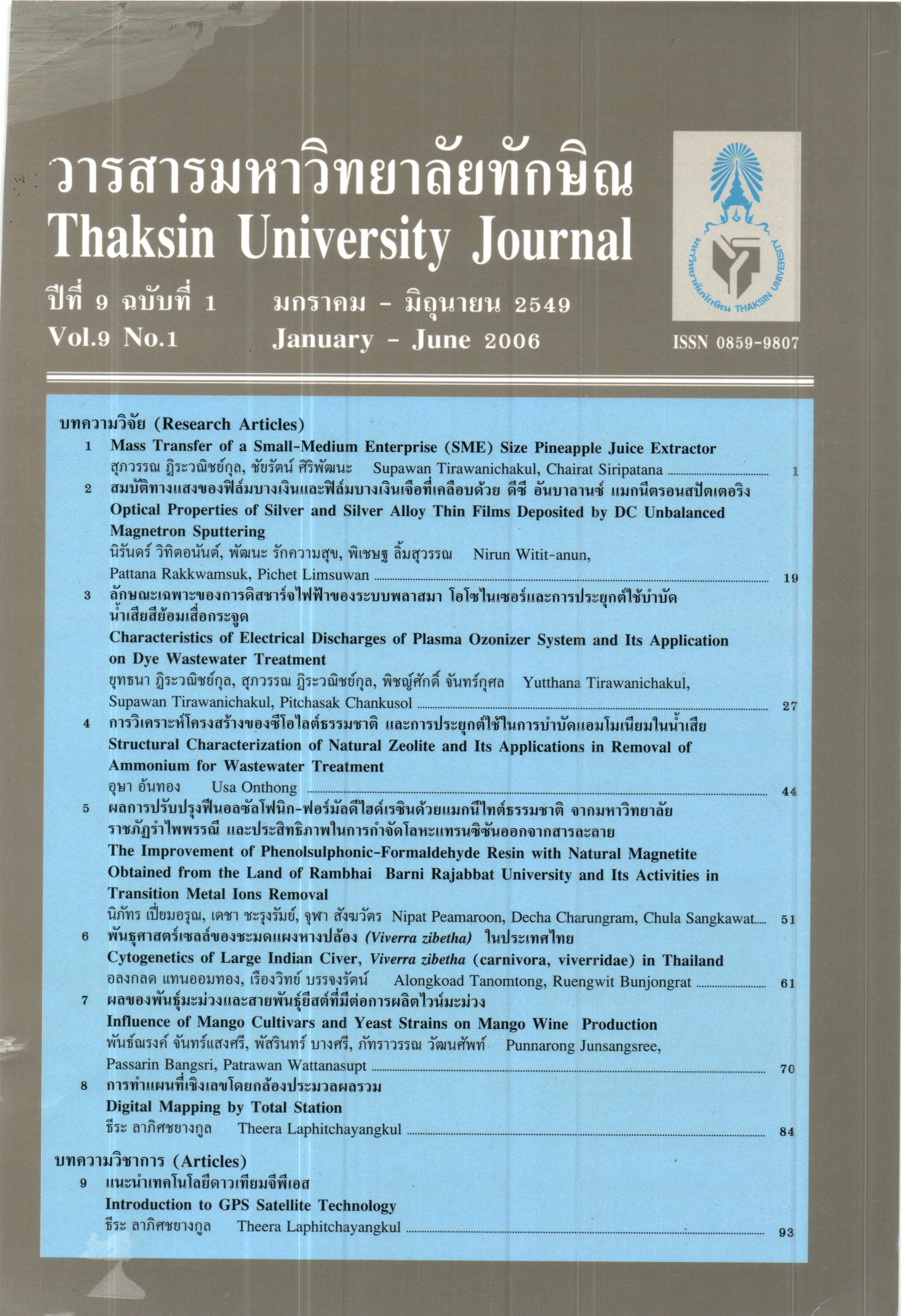ผลของพันธุ์มะม่วงและสายพันธุ์ยีสต์ที่มีต่อการผลิตไวน์มะม่วง
Main Article Content
Abstract
Production of mango wine used 4 mango cultivars; Kaeo, Choke-anan, Namdokmai, and Aokrong, and then fermented with e yeast strains, Saccharomyces cerevisiae TISTR b013, S. cerevisiae TISTR 5020 and S. ellipsoideus TISTR 5194. After fermentation for r month, results showed that fermentation rates for all yeast strains had a little difference, but there were more different when using different mango cultivars. Mango wines were aging at 10oC for b months, and then they were analysed for total soluble solid content and alcohol concentration. Treatments that had over average in alcohol concentration and lower average in total soluble solid content were treatment t) Namdokmai and S. cerevisiae TISTR 5013, 2) Namdokmai and S. cerevisiae TISTR b020, g) Namdokmai and S. ellipsoideus TISTR 5194, and a) Aokrong and S. cerevisiae TISTR b020 were selected. Selected mango wines were evaluated for sensory quality using Davis Scorecard and zo trained panelists. Mango wine from Namdokmai cultivar and S. cerevisiae TISTR 5013 strain was superior to other treatments in total acceptability. Chemical properties of optimal mango wine were alcohol tr.g2o/o, total soluble solid s.sz'Brix, pH 3.98, total acidity 7.s2%, volatile acid o.z+%, s\gar o.4g%, total sulphurdioxide O.Lr%, extractable 1.57%, and ash o.rc%. Mango wine used Namdokmai mango cultivar as a raw material and S. cerevisiae TISTR 5013 as starter could be classified as a dry wine because of lowering than t% sugar content.
Article Details
Section
Research Articles

